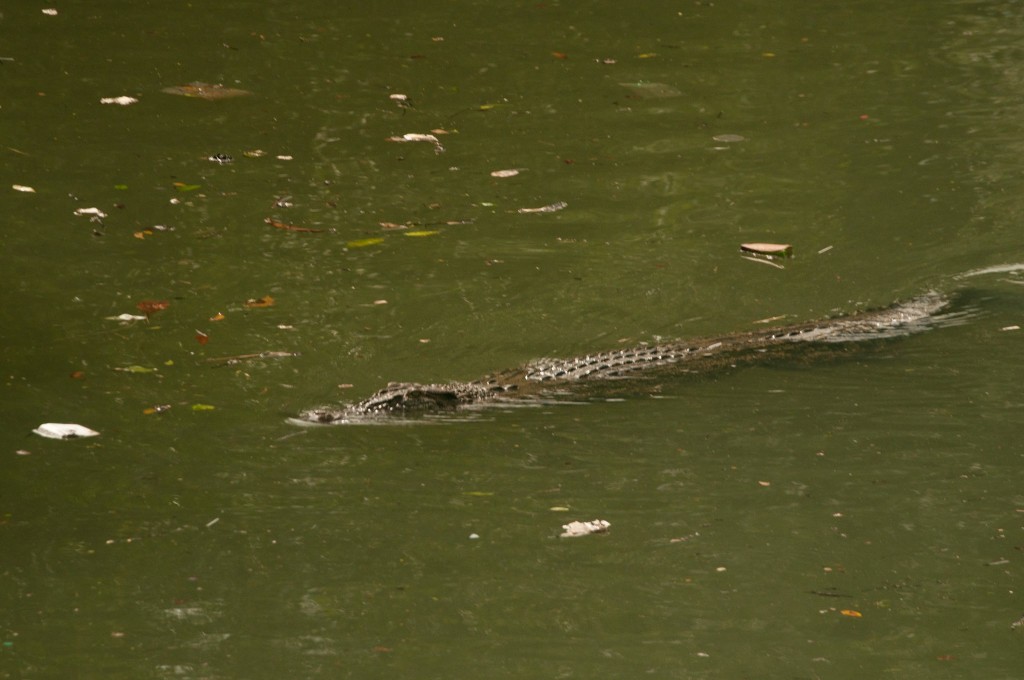On 2 February 1971, 18 nations met in Iran to sign the Convention on Wetlands. 45 years later, over 2000 Ramsar sites across the world conserve the diverse and productive ecosystem that is the wetlands. On the same day 45 years later, the 17 students returned to the Duke University Marine Lab after two weeks learning about marine ecology on St. John Island in the U.S. Virgin Islands.
When someone mentions the Caribbean, reefs of colourful corals and elusive marine megafauna come to mind immediately. The importance of mangrove forests is often overshadowed by the diversity supported by coral reefs. However, the former acts as a crucial nursery for juvenile fishes that eventually inhabit the latter. Mumby et al. (2004) found that the presence of mangroves greatly alters the numbers and types of fish found in coral reefs. The salt-tolerant forests provide a refuge from predators for the small fry that eventually migrate to the corals when they mature. Indeed we have seen the baby versions of many familiar fishes while we snorkelled among the red mangroves in Hurricane Hole. The mangroves are so strictly protected as part of the Virgin Islands Coral Reef National Monument that we weren’t even allowed to swim with fins.
Unfortunately, not all mangrove forests around the world as well conserved. The majority of mangroves in the world are found in Asia. But the more there is, the more there is to lose. In Southeast Asia, Friess and Richards (2015) documented the loss of over 100,000 hectares of mangroves between 2000-2012, with Myanmar, Indonesia and Malaysia leading the race to the bottom. The deforestation of mangroves was primarily attributed to the expansion of the aquaculture industry to meet the growing global demand for food. Rice agriculture and oil palm plantations were also considerable factors in land conversion. Such resources are undoubtedly important, but the mangroves themselves serve more than to provide resources for humans. After the 2004 Indian Ocean tsunami that resulted in devastating loss of lives and property, various researchers found evidence that mangroves forests buffered the worst brunt of the tidal wave, protecting human habitations. To prevent further losses of these important ecosystems, policies must address the corresponding drivers of deforestation.
However, for reforestation efforts to be effective, we must have a comprehensive understanding of the science behind the many ecological interactions present. For example, predation in coral reefs can result in implications on adjacent habitats such as seagrass meadows and mangroves forests. In the class led by Dr. Brian Silliman, we focused on the complexities of trophic cascades, where consumption behaviours of organisms can have varying degrees of impact on other levels of the food chain. Previously, the availability of nutrients was thought to be the limiting element in determining the growth of salt marshes from a bottom-up control. However, Silliman and Bertness (2002) showed that the potential for grazing marsh periwrinklesto decimate grasslands is only curtailed by their predators, the blue crabs.
The wetlands hold a special place in my heart. Before urbanization swept through modern Singapore, we were but a tiny, swampy island. Now, less then 5% of our natural forests remain. But in the northern tip of Singapore, the Sungei Buloh Wetland Reserve was where I first fell in love with nature. In the sweltering humid climate while being attacked my swarms of mosquitoes, I learned about how the mangroves adapted to low oxygen conditions with aerial roots, how the trees excreted salt through their leaves to maintain osmotic gradients, and their mutualisms with bacteria to derive nutrients from the poor soil. I watched mudskippers waddle out from their little puddles only to be eaten by birds migrating down from as far as Serbia. Monitor lizards and crocodiles and otters patrol the estuaries while students, retirees, and everyone in between watched with awe and wonderment from the boardwalk.
From Southeast Asian swamps to Caribbean mangroves to salt marshes right here in coastal North Carolina, take some time this weekend to go out and appreciate the beautify water-logged ecosystems that is the wetlands.


